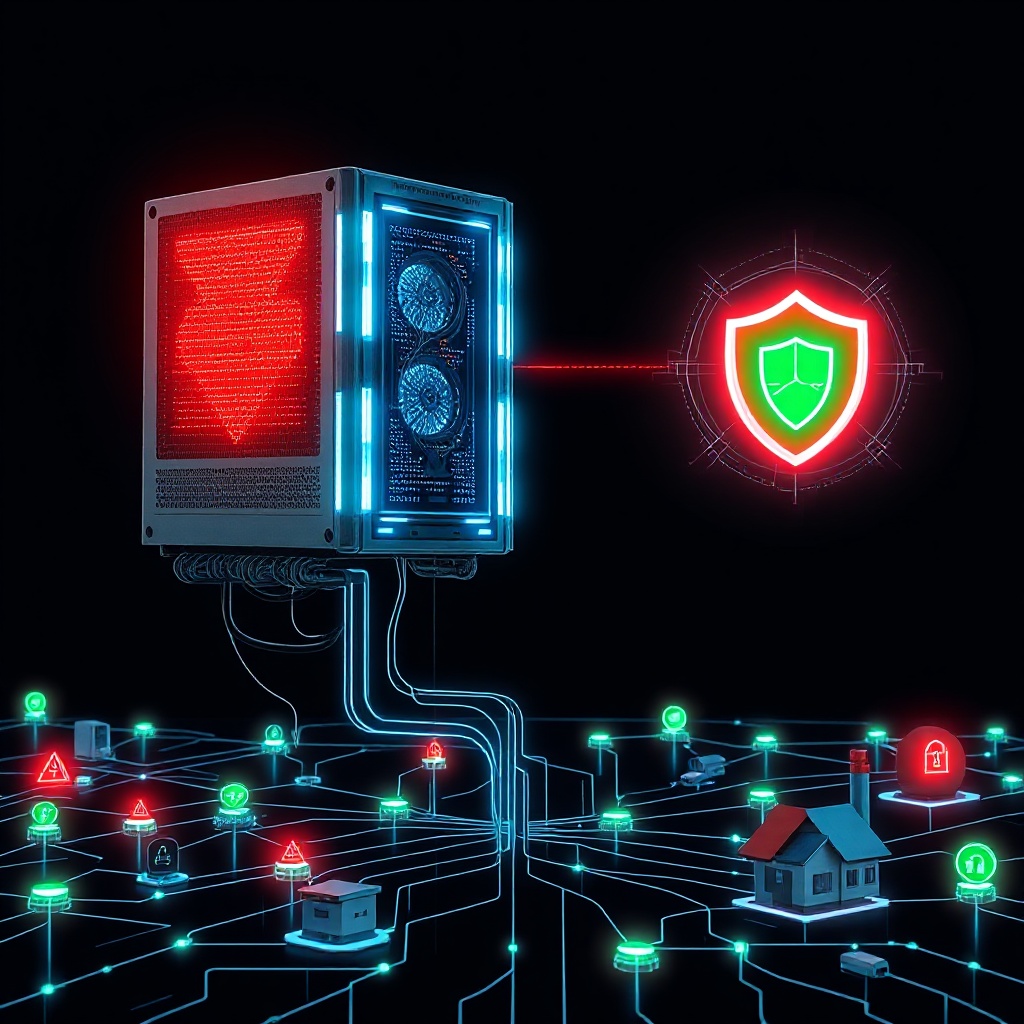
Discover how quantum computing threatens IoT security and why crypto-agility offers a practical solution for resource-constrained devices with long lifecycles.

Drivetech Partners
Quantum computing technology is rapidly advancing toward the point where it will fundamentally undermine the cryptographic foundations that secure today's Internet of Things (IoT) devices. While experts predict quantum computers capable of breaking common encryption algorithms may emerge by the 2030s, the unique constraints of IoT devices—particularly their long lifecycles and limited resources—demand a strategic approach to security that balances immediate costs against future risks.
Key Takeaways
Quantum computers will eventually break common IoT encryption schemes like RSA and ECC, potentially within a decade
Smart meters and other IoT devices with 10-20 year lifespans face unique security challenges due to their resource constraints
Crypto-agility offers a practical middle ground between inadequate security and prohibitively expensive immediate post-quantum implementation
Not all IoT data needs equal protection—organizations should prioritize security based on data sensitivity and value
Manufacturers and operators must develop clear transition strategies from "quantum-ready when needed" to "quantum-safe" as threats evolve

Quantum Computing's Looming Threat to IoT Security
The emergence of quantum computing technology presents an unprecedented challenge to IoT security. Today's widely deployed public-key cryptography systems—primarily RSA and ECC—are fundamentally vulnerable to quantum algorithms. Using Shor's algorithm, a sufficiently powerful quantum computer could break RSA-2048 encryption in under 24 hours, compared to the thousands of years required by traditional computers.
This capability isn't just theoretical. Experts anticipate cryptographically relevant quantum computers will emerge as early as the 2030s, threatening the entire IoT ecosystem. Most concerning is the "harvest now, decrypt later" attack strategy, where adversaries collect encrypted data today with plans to decrypt it once quantum computing matures.
For IoT manufacturers and operators, this creates a critical security timeline problem: devices deployed today might still be operational when their encryption becomes obsolete.
The IoT Vulnerability Landscape: Smart Meters and Low-Power Devices
Smart meters and similar IoT devices represent a particularly challenging segment of the quantum security problem. These devices typically have expected lifespans of 10-20 years with minimal or no physical updates after installation. Their designs prioritize ultra-low power consumption, limited memory, and minimal processing capability—constraints that make implementing resource-intensive post-quantum cryptography (PQC) impractical today.
Consider these common constraints in IoT devices:
Memory limitations that can't accommodate the larger key sizes required by PQC
Bandwidth restrictions that make larger cryptographic signatures problematic
Processing limitations that can't handle the computational demands of post-quantum algorithms
Power constraints that restrict the energy available for complex cryptographic operations
These limitations create a significant security gap: devices deployed today might still be active when quantum threats materialize, yet they lack the resources to implement full post-quantum protection from day one.
The Crypto-Agility Imperative: Future-Proofing IoT Security
Rather than attempting to implement full post-quantum cryptography today, many security experts advocate for crypto-agility as a strategic approach. Crypto-agility refers to designing systems and devices that can receive cryptographic updates post-deployment, enabling future upgrades to quantum-resistant algorithms as standards and threats evolve.
Technical requirements for creating crypto-agile IoT systems include:
Sufficient memory and compute headroom for future algorithm updates
Protocol flexibility to support new key types and signature schemes
Secure update mechanisms for delivering cryptographic changes
Standardized APIs or modular architecture for algorithm replacement
Tools like the AgileSec™ SDK demonstrate how this approach works in practice. This framework allows algorithm swaps without code changes, reducing developer error while providing a pathway to update deployed devices when quantum-resistant standards mature.
Risk Assessment: Not All IoT Data Needs Quantum Protection Today
A nuanced approach to quantum risk begins with recognizing that not all IoT data carries equal value. Routine operational data, such as water usage measurements from a smart meter, may not justify immediate post-quantum cryptography implementation. The cost of protecting such low-value data with resource-intensive algorithms likely exceeds the potential damage from its compromise.
In contrast, devices handling personal, medical, or financial information face significantly higher quantum attack risk. These high-value data streams are more likely to attract sophisticated threat actors with early access to quantum computing resources.
The most likely early adopters of quantum decryption capabilities will be national laboratories and advanced nation-states—not everyday cybercriminals. This reality creates a tiered risk profile that allows organizations to prioritize protection based on data sensitivity and device criticality.
Engineering Trade-offs: Balancing Security with Practicality
Implementing post-quantum cryptography today across all IoT devices creates significant technical and financial challenges. For constrained devices like smart meters, immediate PQC deployment increases hardware costs, raises power consumption, and introduces operational complexity that may be unnecessary if quantum threats remain years away.
Crypto-agility offers a balanced middle ground. While it adds some design complexity and requires robust update mechanisms, it defers the cost and impact of adopting new cryptography until truly needed. This approach enables organizations to:
Match security investment to actual risk profiles
Avoid premature optimization for threats that may evolve
Create flexible protection strategies that can adapt as standards mature
Focus resources on securing truly sensitive data
The most pragmatic approach involves tiered protection strategies where security investments align with data sensitivity, device role, and likely attacker profiles.
Evolving Standards: NIST and the Quantum-Safe Landscape
The standardization landscape for post-quantum cryptography continues to develop. In August 2024, NIST finalized its first set of post-quantum cryptographic standards, including CRYSTALS-Kyber, CRYSTALS-Dilithium, and SPHINCS+. These algorithms provide the foundation for quantum-resistant approaches but require significant resources compared to today's standard algorithms.
These standards mark a turning point for industry adoption of quantum-resistant approaches. However, implementing them immediately across all IoT devices remains impractical. Crypto-agile approaches facilitate compliance by enabling future algorithm updates without requiring complete system recertification—a crucial advantage for regulated industries.
As standards continue to evolve, organizations that have built crypto-agility into their systems will find themselves better positioned to adapt to changing requirements with minimal disruption.
Responsibilities in the Quantum Era: Manufacturers and Operators
The quantum security transition creates distinct responsibilities for both device manufacturers and operators. Manufacturers must design for crypto-agility from the outset and maintain robust update channels for field-deployed devices. This includes developing secure firmware update mechanisms, providing sufficient resource headroom for future algorithm changes, and documenting cryptographic capabilities.
Operators face different challenges. They should maintain comprehensive inventories of cryptographic assets, understand the update capabilities of their deployed devices, and plan for periodic security reviews as post-quantum standards and threats evolve. Both parties need strategies to transition from "quantum-ready when needed" to "quantum-safe" as threats become more imminent.
This shared responsibility model requires clear communication about:
Device lifespans and support commitments
Update capabilities and limitations
Risk assessment frameworks for different data types
Transition timelines as quantum computing advances
Implementation Tools: Enabling Post-Quantum Transitions
Several tools and frameworks are emerging to support crypto-agile implementations in IoT environments. The AgileSec™ SDK enables remote, policy-driven cryptographic updates without code modification—critical for managing widely distributed IoT devices. This approach reduces implementation complexity while providing clear upgrade paths as quantum threats materialize.
Similarly, crypto-agile eSIMs allow secure element-based cryptography upgrades in the field. These solutions help manage transitions and certification requirements for IoT deployments, particularly in regulated industries where recertification processes can be lengthy and expensive.
These implementation tools bridge the gap between today's practical constraints and tomorrow's security requirements, enabling a measured transition to quantum-resistant security that balances cost, complexity, and risk.
Sources
Insights2Techinfo: Quantum Computing and its Potential Impact on IoT Security
IDEMIA: Cybersecurity: Brace Yourself for the Quantum Leap
IoT For All: How Quantum Computing Could Impact IoT Security Protocols
IoT Insider: How do quantum computers impact IoT security?
InfoSec Global: AgileSec SDK
FS-ISAC: Building Cryptographic Agility in the Financial Sector





